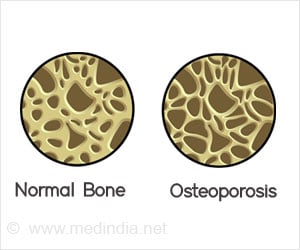In a first of its kind surgery, a team led by an Indian origin scientist has performed a new robotic-assisted bladder-reconstruction method to treat a 10-year-old Chicago girl born
In a first of its kind surgery, a team led by an Indian origin scientist has performed a new robotic-assisted bladder-reconstruction method to treat a 10-year-old Chicago girl born with an abnormally small bladder that made her incontinent.
The method developed by surgeons at the University of Chicago Medical Center, performed the operation, using the DaVinci robotic surgical system, six times, with good results and no significant complications.Treated in Feb. 21, 2008, the first patient suffered from a very small, spasmodic bladder, a birth defect that led to gradual kidney damage and loss of urinary control.
"We refer to this condition as neurogenic bladder. Her bladder could barely hold six ounces. Worse, it produced frequent involuntary contractions, which forced the urine back up into the kidneys, where it slowly but inevitably causes damage, including frequent infections," said team leader Mohan S. Gundeti, MD, assistant professor of surgery and chief of pediatric urology at the University of Chicago's Comer Children's Hospital.
The girl always felt that she urgently had to go to the bathroom. She stopped drinking juice or soda. She even cut back on water, to less than two cups a day. Medication helped a little, but despite two years of trying different treatments, the problem continued to get worse and began to cause kidney damage, which made surgery necessary.
This is the first time a robotic approach has been adopted to enlarge and relax a tiny spasmodic bladder. The method has produced quicker recovery, less pain and minimal scars in other procedures.
"This is a major, lengthy operation, essentially five smaller procedures done in sequence," he said.
Advertisement
"The robotic approach enabled us to avoid that entire incision, which causes significant post-operative pain, presents an infection risk and leaves a big scar," said Gundeti.
Advertisement
Later, the surgeons converted the appendix into a "continent conduit," a drain for the new, expanded bladder, with one end implanted into the wall of the bladder and the other end leading outside the body through small outlet in the lower abdomen. A skin flap covers the fleshy appendix opening.
"No one had ever done the full operation this way. It requires a lot of familiarity with both the open operation and considerable laparoscopic experience," said Gundeti.
He added: "Patients like surgery without significant scars," Gundeti said. "We also hope to show that in addition to the benefit of no big wound to heal, just five small punctures, there is less risk of infection, quick recovery and less pain."
Though the girl still has to empty her bladder with a regular catheter, it is now easier to do and is far more reliable at retaining urine.
"She hasn't had a leak since then. She can drink water, or juice, even soda. She's enjoying the freedom she never had," said her mother.
The study will be published in the upcoming issue of the journal Urology.
Source-ANI
SRM











